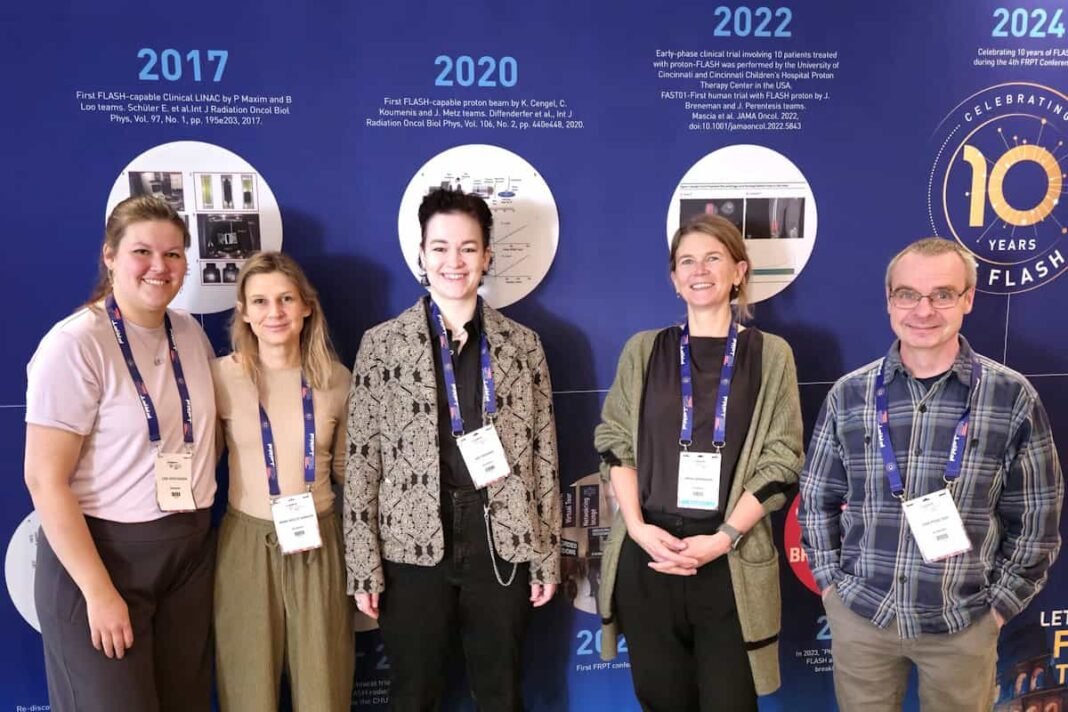Contents [hide]
Electron and Proton FLASH Technologies Offer Similar Benefits in Mice Radiotherapy
A groundbreaking study reveals that electron and proton FLASH radiotherapy show remarkable effectiveness in reducing acute skin damage during cancer treatment in mice, paving the way for advancements in cancer care.
Lead: Recent research from Aarhus University investigates the effectiveness of two types of FLASH radiotherapy—using electrons and protons—on mice, finding that both methods provide similar skin-sparing benefits. This study, published on March 28, 2025, sheds light on innovative approaches to cancer treatment that prioritize patient well-being by minimizing severe side effects such as acute skin damage.
Understanding FLASH Radiotherapy
– **What is FLASH Radiotherapy?**
FLASH radiotherapy is an advanced cancer treatment technique that delivers high doses of radiation in a fraction of a second. This method is designed to minimize exposure time while maximizing radiotherapy’s efficacy against tumors.
– **Why Use FLASH Radiotherapy?**
Traditional radiotherapy often causes significant side effects, including skin damage, fatigue, and tissue damage. FLASH radiotherapy aims to enhance therapeutic effects while preserving healthy tissue, which is crucial for improving patients’ quality of life during and after treatment.
The Study and Its Findings
– **Who Conducted the Study?**
The research was led by a team at Aarhus University, renowned for its contributions to medical physics and radiation therapy.
– **Where Was the Research Conducted?**
The study took place at Aarhus University’s Department of Radiation Physics, utilizing state-of-the-art facilities and animal models to ensure reliable results.
– **Key Findings of the Research:**
The study compared the impact of electron-based and proton-based FLASH treatments on mice. Notable findings included:
– Both types demonstrated a remarkable reduction in acute skin damage.
– Skin sparing effects were consistent across both methodologies, showing no significant difference in efficacy.
– The research suggests that either form can be implemented in clinical practice, depending on availability and patient needs.
Significance of the Research
– **Implications for Future Cancer Treatments:**
The similarity in outcomes for both types of FLASH therapy opens new avenues for clinical applications. Options between electrons and protons can provide healthcare providers with flexibility in treatment planning based on patient-specific parameters.
– **Expert Opinions:**
“Our research indicates that both electron and proton FLASH can effectively reduce skin toxicity in patients,” says Dr. [Insert Expert’s Name], a leading scientist involved in the study. “This finding is crucial as it validates the potential of utilizing either type for clinical radiotherapy without compromising safety.”
Why This Research Matters
– **Patient Quality of Life:**
Reducing the incidence of skin damage during radiotherapy can significantly impact a patient’s quality of life. Lower rates of side effects mean better recovery experiences and overall satisfaction with cancer treatments.
– **Scientific Advancements:**
This research is a noteworthy advancement in medical physics, highlighting the importance of continued innovation in treatment techniques to address the complexities of cancer care.
Next Steps in Research
– **Further Investigations:**
More studies are necessary to explore the long-term effects of FLASH radiotherapy in humans and to confirm these findings in clinical settings.
– **Regulatory Considerations:**
As FLASH therapies are further developed, it will be important to establish guidelines and standards for their clinical usage to ensure patient safety and optimal treatment efficacy.
Conclusion: The pivotal research from Aarhus University on FLASH radiotherapy offers significant insights into reducing acute skin damage in cancer treatment, revealing that both electrons and protons perform equally well. As the medical community looks toward more refined and patient-centric cancer treatments, findings like these pave the way for a hopeful future in oncology care.
Keywords: FLASH radiotherapy, electron therapy, proton therapy, acute skin damage, cancer treatment, Aarhus University, medical physics, patient care.
Hashtags: #FlashRadiotherapy #CancerTreatment #MedicalPhysics #ProtonTherapy #ElectronTherapy #SkinHealth
Source link



 Stay Informed Without the Overload!
Stay Informed Without the Overload!